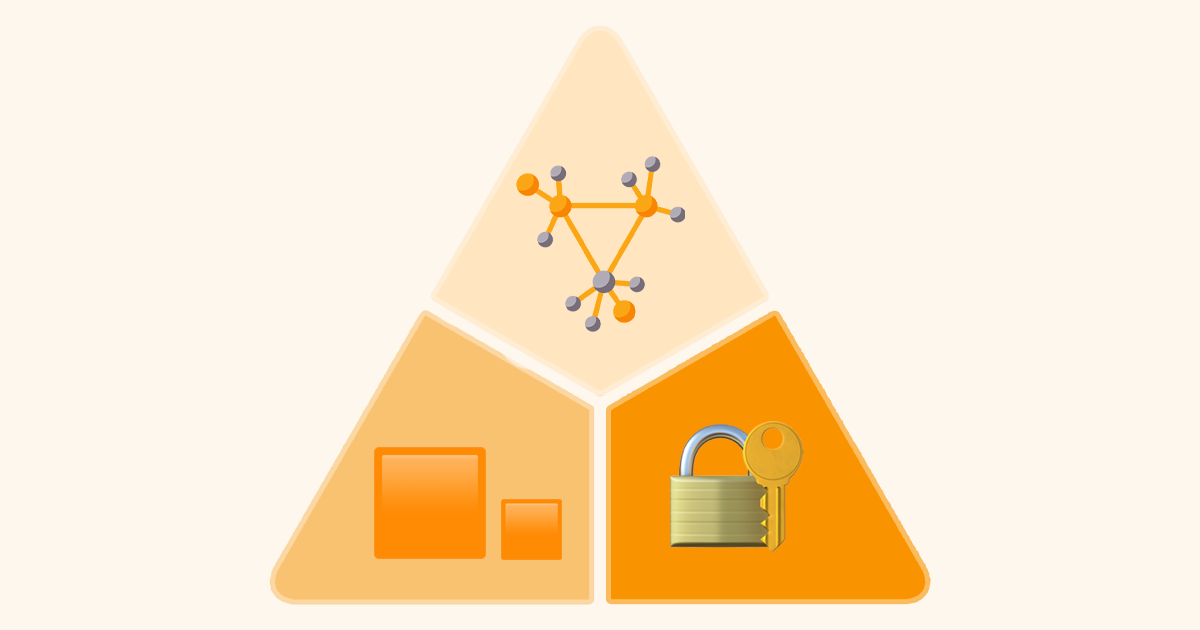
When you build a blockchain, you want it to be decentralized, scalable, and secure. However, you can’t build a blockchain that’s completely decentralized, fully scalable, and totally secure at the same time.
Developers can only prioritize two out of the three goals. If they want to increase scalability and security, they often have to reduce decentralization. If they choose decentralization and security, they often end up sacrificing scalability. In other words, building a blockchain always involves compromise.
This is what we call the blockchain trilemma.
Although developers have been trying to design blockchain systems that could solve the trilemma, until now, no blockchain has fully achieved all three goals at once.
Let’s take a closer look into the three goals:
Decentralization means that the blockchain isn’t controlled by a single person or organization. Instead, it operates through a distributed network of thousands of independent devices, called nodes, that work together to maintain the blockchain. Each of these devices follows the same set of rules to verify and record transactions. Everyone can participate, and no one has special privileges.
Decentralization builds trust through transparency, fairness, and equal access. But the more decentralized a network becomes, the more coordination it requires. And that can slow things down when more users join the network.
Scalability is a blockchain’s ability to handle an increasing number of transactions, serve more users, process more data, and execute more complex activity without getting congested. If millions of users want to use the blockchain at the same time, the system will lag if it is not able to meet the increased demand.
However, achieving scalability is difficult without giving up some amount of decentralization or security. To scale, many blockchains choose to use either fewer nodes or centralized systems just to keep up. This might improve speed, but it can weaken the network’s trust and reliability.
Security means the blockchain can resist attacks and continue operating safely even when some people on the network try to manipulate it. A secure blockchain is one where more than 50% of the nodes would need to be compromised to break the system. This makes it very difficult for attackers to succeed. Therefore, the more independent participants the blockchain has, the more secure it becomes.
Many blockchains are built with complex algorithms and security mechanisms, but having to maintain a high level of security at all times can cause the network to run slower.
As you can see, a blockchain can’t fully maximize decentralization, scalability, and security all at the same time. Improving one or two often weakens the third.
This is the essence of the blockchain trilemma. It’s not an unsolvable problem, but it requires compromises, creative solutions, and sometimes, new architecture to make it work.
For instance, let’s analyze Bitcoin as an example of the Blockchain Trilemma.
Decentralization:
Bitcoin uses a system called Proof of Work (PoW), where miners compete to solve complex puzzles in order to add new blocks to the network. Anyone with the right equipment can join, and no single organization controls the network.
Security:
Bitcoin’s PoW mechanism also provides strong security. To compromise the network, a group would need to control more than half of the total computing power in the network.
Scalability:
Here’s where Bitcoin runs into challenges. Bitcoin can only process around 3 to 7 transactions per second. As more users join, the network gets more congested and users experience delays and high transaction fees. This makes Bitcoin less practical for everyday payments.
So, although Bitcoin is great at decentralization and security, it struggles with scalability.
To help solve this issue, developers have created scaling solutions like the Lightning Network, which allow faster transactions by building a separate blockchain layer on top of the Bitcoin blockchain. Other blockchains use other solutions to attempt to solve the trilemma.
The Blockchain Trilemma reminds us that every blockchain has limits. No system is perfect. Developers have to make smart trade-offs, depending on what they want their blockchain to achieve. Understanding this trade-off can help you choose which networks to trust and how to use them wisely, depending on your needs.